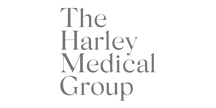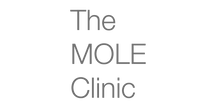AHAs vs BHAs
In the latest instalment of our new blog series focusing on skincare ingredients, we examine the key differences between AHAs and BHAs – and take a closer look at new kid on the block PHA.
How well do you know your skincare acids? Nowadays there’s a wide range of different types featured in all sorts of skincare products, which can cause some confusion. However, where exfoliation is concerned, it really is as easy as A, B – and P! AHAs, BHAs and PHAs are all hard-working heroes that chemically (as opposed to physically) exfoliate and resurface the skin, leaving your complexion clearer and brighter. However, it’s important to choose the correct acid and concentration for your individual skin type – and to use such products correctly.
What is the difference between chemical and physical exfoliation?
Physical exfoliants, such as scrubs, remove dead skin cells through friction. They can be very effective – especially on the body – but are not generally recommended for anyone prone to redness, sensitivity or broken capillaries. Chemical exfoliators, such as AHAs, BHAs and PHAs, break down the bonds between the surface skin cells, so they are shed more easily.
What is an AHA?
AHA stands for Alpha Hydroxy Acid. This is the collective name for a selection of water-soluble acids. Common examples include Glycolic Acid, Lactic Acid, Citric Acid and Mandelic Acid. AHAs exfoliate, stimulate collagen production and improve the skin’s ability to retain moisture. They’re an excellent weapon to add to your anti-ageing arsenal, especially if your skin is normal, dry and/or mature.
AHAs can be present in all sorts of skincare products, including face washes, serums and toners. Formulated with 8% Glycolic Acid, SkinCeuticals’ Glycolic Renewal Cleanser visibly clears and brightens the complexion, stimulating the skin’s natural exfoliation process without stripping it of moisture. It’s ideal for dull, discoloured or ageing skin, and to complement/maintain the results of in-clinic chemical peels.
If you prefer using your exfoliating acids at night (which can help to minimise any potential photosensitivity) we recommend Swissline Cell Shock Age Intelligence Perfection Booster. This exfoliating formulation features 10% Lactic Acid – a powerful AHA (Alpha Hydroxy Acid). Delivering a gentle but effective skin-friendly peeling, to resurface the complexion, refine pores, smooth fine lines, and reduce imperfections.
What is a BHA?
BHA stands for Beta Hydroxy Acid, of which the most common is Salicylic Acid. Beta Hydroxy Acids are oil-soluble, and can penetrate deeper into the pores than water-soluble AHAs can, to remove dead skin cells and sebum. BHAs are also antibacterial and inflammatory, so they’re a great option for oily or combination skin, clogged/enlarged pores or moderate acne. In addition to exfoliating, BHAs help to reduce excess oil production, and target the bacteria that colonise pores and cause acne spots.
Avant’s Pro Salicylic Immediate Blemish S.O.S. Treatment is a targeted treatment that helps to clear existing blemishes, soothe irritation, and prevent new spots from forming. This fact-acting formula uses BHA Salicylic Acid to decongest blocked pores, eliminate excess sebum and minimise inflammation. Other key ingredients include Sarcosine to reduce shine, and antioxidant Papaya to soften, smooth and protect against free radical damage. Simply apply a thin layer to any affected areas after cleansing, up to three times a day.
What is a PHA?
PHA stands for Polyhydroxy Acids. These are basically second-generation AHAs. Common examples include Gluconolactone, Galactose and Lactobionic Acid. PHAs have larger molecules, so they do not penetrate as deeply as AHAs and BHAs. This means that they offer gentle exfoliation to break down dead skin cells with minimal irritation, making them ideal for mature, dry/dehydrated and/or sensitive skin. Most PHAs also incorporate antioxidant properties, to counter free radical damage. Accomplished multi-taskers, PHAs also help to protect against collagen degradation and strengthen the skin barrier function.
If you’re keen to see how Polyhydroxy Acid could improve the health and appearance of your skin, we recommend Medik8’s Press & Glow. This high-performing acid toner features PHA Gluconolactone to visibly brighten the skin and boost its everyday glow, without irritation. This advanced formulation hydrates, resurfaces and smooths – without sensitising the skin – to create a perfected skin surface that can effectively absorb active ingredients, and establish a better base for make-up. Simply sweep over skin after cleansing.
How often should I be exfoliating acids?
There’s no easy answer to this question, because everyone’s skin is unique. Less is more, especially if you’re new to AHAs, BHAs and PHAs. Over-exfoliation can cause irritation and inflammation, so while a little is good, a lot is not. Because AHAs, BHAs and PHAs can be present in a variety of skincare products, it’s important to read the labels carefully to make sure you’re not inadvertently overdoing it by using too many acid products, too often.
In addition to frequency of use, another important factor to consider is concentration. The higher the percentage of acid it contains, the stronger the product, so it’s always best to start low and (if appropriate) work your way up. Lastly, acids can sometimes increase the skin’s photosensitivity. That’s yet another reason to wear a daily sunscreen, which we should all being doing anyway, all year round, whatever the weather.
Not all acids are specialist exfoliators. Click here to find out more about the properties of Hyaluronic Acid, and how best to incorporate it into your skincare routine.


